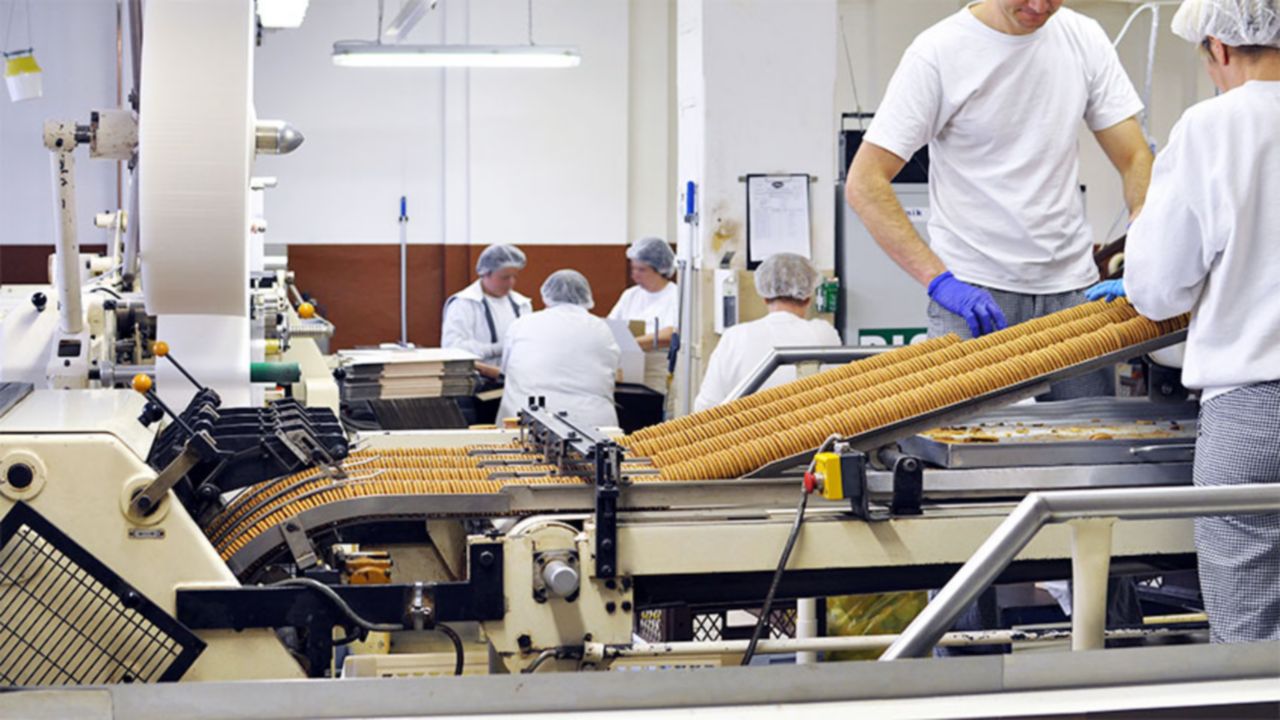The centerpiece of the state-of-the-art infrastructure is the Logix Control Platform with a distributed I/O architecture. The Rockwell Automation solution also included redundant HMI servers, allowing for both production back-up and spare capacity for future applications.
Four new workstations were strategically installed in the facility, allowing operators to monitor real-time production data using the FactoryTalk® View Site Edition (SE), supervisory-level HMI software from Rockwell Automation.
“For the first time, information on wheat extraction, flour yields and peak-production amounts all feeds into highly visual display, allowing operators to accurately optimize the process,” Black explained. “And if we’re not meeting our targets on a daily or trending basis, we can track what’s happening to find out why. Our new insights also are invaluable for the maintenance folks.”
Multiple workstations and equipment sensors have contributed to both uptime and worker safety.
“Alarms can pause or even suspend the milling process,” Black said. “Now, if a sensor sets off an alarm, an operator can simply go to the nearest workstation, acknowledge it and take care of it. No more running around to try to figure out the problem.”
The remote support provided by Kice – based in Kansas – is another boon to Black’s peace of mind. “An engineer in Wichita can jump on our system in a minute, see what’s happening and help us through a solution,” he said. “Kice deserves a lot of credit for the work they put in and their continued support to make this a successful project.”
NEW SYSTEM CAPABILITIES
Proof of the new system’s success: Downtime has decreased, according to Black “With the Rockwell Automation solution, we are maintaining our good yields and meeting our production targets – both things we can more accurately measure now,” he added.
Now that the Mount Joy mill’s new infrastructure is in place, Black and his team are consulting with Kice about how to further leverage the system’s advanced capabilities.
“We have the potential to monitor a lot more than just pieces of equipment,” Black said. “I have a list of enhancements that we can bolt on.”
Topping the list: automated energy monitoring. Power usage is the mill’s second-largest operating cost, after personnel. Industrial strategies for controlling power costs – especially during peak demand periods – must be reported using accurate energy-use data.
“The future holds a lot of promise with our new system,” said Black, who added that the Kice-designed solution, built on Rockwell Automation technology, will be “the standard going forward for our sister facilities.”
The results mentioned above are specific Rogers Wilkins Mill’s use of Rockwell Automation products deployed by Kice Automation in conjunction with other products. Specific results may vary for other customers.
ControlLogix, FactoryTalk and PartnerNetwork are trademarks of Rockwell Automation Inc.

